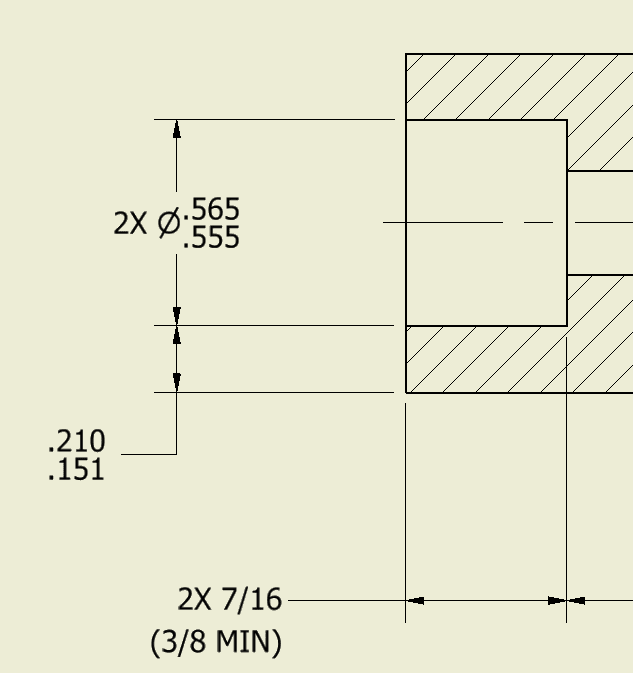Woosang,
For what its worth, personally I typically use the average or middle point of the tolerance bound interchangeably with the term "nominal". Unless otherwise specified or instructed, this is what manufacturing will try to hit regardless if the tolerances are applied unilaterally (+0/-.01) or bilaterally (+/-.01) or otherwise. It is also possible (though rare) to apply a tolerance which the notated value is not even within the tolerance band ie: .375 +.005/+.010 where referring to .375 as nominal would be slightly confusing - at least to me.
Perhaps this isn't a proper or precise use of the term "nominal". In that case I would change my recommendation to default to the middle/average of the tolerance band - ESPECIALLY if this 3D CAD data has any chance of being fed directly into the production process. If a model must be used for programming for example 3D printing, CAM for machining (especially 3D toolpaths), etc.. and a model is already available chances are it will be used - if it is not modeled to be in the middle of the tolerance band the chances of someone not taking the time to remake the model or adjusting the toolpaths/etc.. to account for this becomes much higher, which could cause issues downstream.
I'd be interested if someone has a contrary opinion. Modeling a feature at .375 when the designer desires to have the print show .375 +0/-.010 certainly makes the designer's life easier, and if the 3D CAD data has zero chance of being fed to manufacturing then it probably doesn't matter much either way.
A few insights on "nominal" from Y14.5:
Y14.5-2009 said:
1.3.56 Size, Nominal
size, nominal: the designation used for purposes of general identification.
Not super helpful or specific. I guess one could interpret this to mean the stated value on the drawing (ie: 1) .375, 2) .380, 3) .370 on your 29 Jan 20 04:44 post) not taking into account tolerances. Y14.5-2018 uses the same definition but adds a reference to USAS B4.1 meaning presumably ASME B4.1 - a brief reading of B4.1 seems to support this use of the word nominal.
Y14.5-2009 said:
2.3.1 Millimeter Tolerances
Where millimeter dimensions are used on the drawings, the following apply.
(a) Where unilateral tolerancing is used and either the plus or minus value is nil, a single zero is shown without a plus or minus sign. In this example the 32 value is the nominal size.
EXAMPLE:
32 0/-0.02 or 32 +0.02/0
This would reinforce your interpretation (29 Jan 20 04:44). The same section (b) reiterates this. Interestingly Y14.5-2018 removes this reference to nominal in the section on millimeter tolerances (see below). Additionally, the inch tolerances section in both 2009 and 2018 is devoid of any reference to "nominal".
Y14.5-2018 said:
5.3.1 Millimeter Tolerances
Where millimeter dimensions are used on drawings, the following apply:
(a) Where unilateral tolerancing is used and either the plus or minus value is 0, a single zero shall be shown without a plus or minus sign.
An important note has been added in Y14.5-2018 which should always be kept in mind, regardless of how one decides to use the term "nominal" :
ASME Y14.5-2018 section 4.1 Fundamental Rules said:
(q) UOS by a drawing/model note or reference to a separate document, the as-designed dimension value does not establish a functional or manufacturing target.


